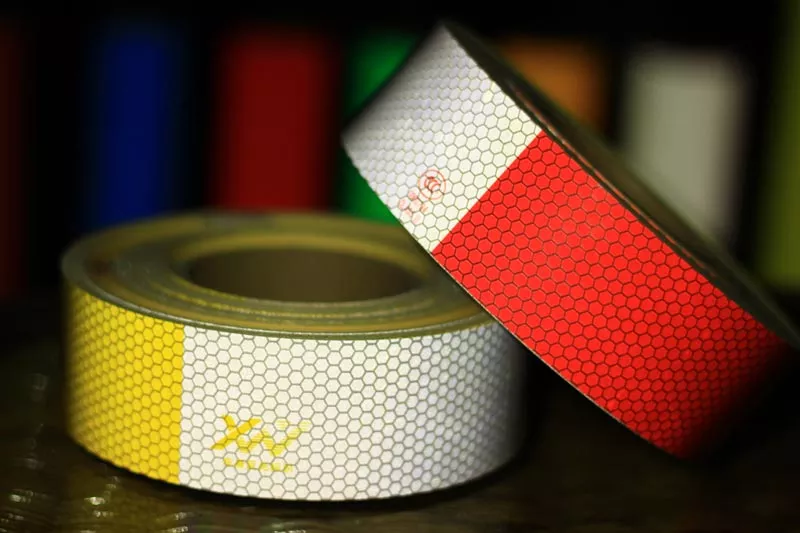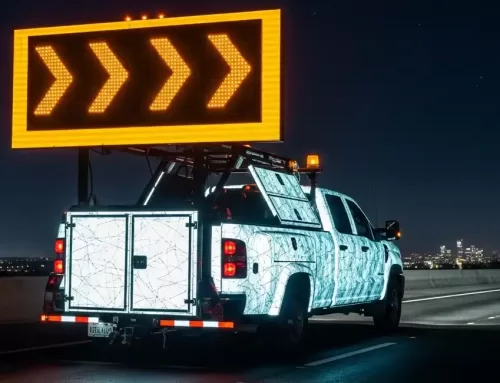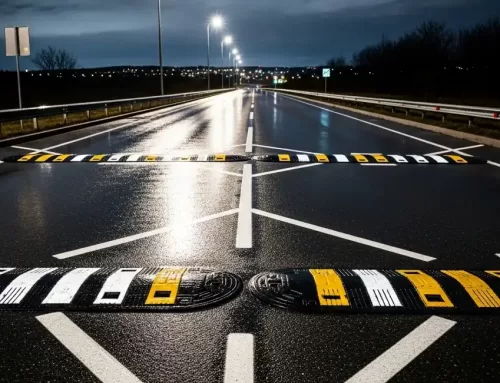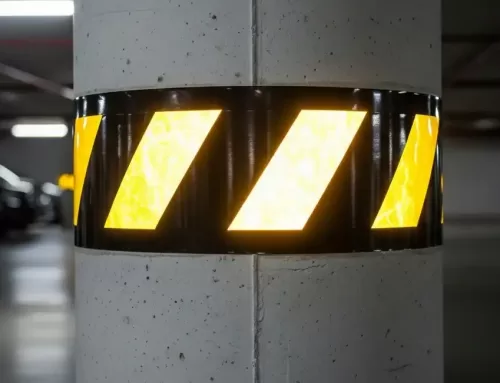How to Remove Conspicuity Tape From a Big Rig

If you’re wondering how to remove conspicuity tape from a big rig, or a trailer, you’re not alone. This guide will help you understand how to remove the old reflective tape and replace it with new, brightly-colored DOT-approved reflective tape. You can follow the steps outlined in this article to remove the old tape and replace it on your big rig without causing an accident.
Dissolve old reflective tape with proper solvent
To remove old reflective tape, you should apply heat and the proper solvent. It is difficult to remove sticky reflective tape from cars, motorcycles, or bicycles, but it can be removed easily with the proper solvent. The solvent should have the ability to dissolve the adhesive on the reflective tape. However, if you do not have any solvent, you can always use a heat gun. However, you must follow the instructions of the manufacturer to remove it safely.
First, you should clean the reflective tape. Use a scraper, a roller, or pressure. Afterwards, wipe the reflective tape with a lint-free paper towel soaked in the appropriate solvent. Dry the tape immediately before the solvent evaporates. Next, you should place the reflective tape on the surface. Press the strip down with your hand. It is important to apply overlapping strokes.
Place it on a trailer
The first time you see conspicuity tape on a trailer, don’t be fooled. This protective tape is not only for safety purposes, but can also reduce crashes. In fact, the NHTSA reports that this tape could help prevent 191 to 350 deaths and nearly 3,000 to 5,000 injuries every year. Moreover, it can reduce crashes by as much as 29 percent in rear and side impacts, which is statistically significant.
DOT requirements require the use of conspicuity tape. It must adhere to federal safety standards and have alternating red and white color segments. The tape should be evenly spaced across the sides of a trailer, with 15 inches between adjacent stripes. To get the best visibility, use the highest caliber of reflective conspicuity tape and apply it in strategic locations on the trailer. The DOT website has a listing of the approved tape.
Regulatory evaluations of the tape show that it is more effective in reducing rear impacts than side impacts. The effectiveness of the tape is also significantly higher in foggy and rainy conditions. In addition, it is most effective on flatbed trailers. Prior to this study, tape was not effective on low-profile vehicles, but the effects deteriorated when dirt covered the tape. A clean tape reduced rear impacts by 53 percent, while a dirty tape decreased its effectiveness by 27 percent.
Another study from Michigan concluded that the tape was effective at increasing the visibility of combination trucks. It also concluded that the tape is more effective on flatbeds than vans. Its effectiveness on flatbeds is significantly greater than its counterpart on vans. This is consistent with other studies, which also found that the tape is more effective on flatbeds than vans. Its low profile and low visibility make flatbeds more difficult to spot in the dark than van trailers.
Although DOT conspicuity tape can reduce the risk of accidents, proper installation and maintenance of the tape are crucial for its effectiveness. Dirty reflective tape decreases its effectiveness over time, so drivers must clean it regularly. Wear and tear are another problem. DOT conspicuity tape must be replaced when it begins to lose its effectiveness. You must also replace it periodically when it begins to lose its effectiveness.
Remove it from a big rig
If you’ve ever wondered if it’s time to remove conspicuity tape from a big truck, you’re not alone. Often times, truck outfitters and manufacturers don’t properly apply the reflective tape. In the event that a level I inspection comes up, it’s important for drivers to make sure the truck is properly marked. Additionally, the lack of reflective tape can lead to penalties, including three severity weight points against the carrier’s safety rating.
In order to maintain compliance with federal laws and regulations, truck drivers must install conspicuity tape. These strips of reflective material are applied on the sides of the big rig or trailer to alert drivers of its presence. The conspicuity tape has to be of the highest caliber and adheres to specific DOT regulations. Drivers must also clean off the reflective tape before leaving the truck or trailer on the road.





